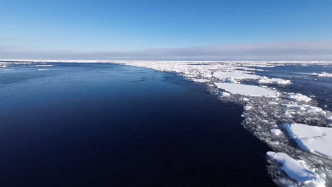
Meteorites are unique samples of extraterrestrial bodies that can provide important information about the origin and evolution of the solar system. More than 60% of confirmed meteorites on Earth have been found in Antarctica. However, a new study has found that due to global warming, precious meteorites on the surface of the Antarctic ice sheet are rapidly "disappearing".

China News Network
The geographical environment of Antarctica has caused meteorites to form "stranding zones" here. In these meteorite-rich sites, the dark appearance makes them easy for humans to detect and discover. With global warming, many meteorites, especially those with high metal content and high thermal conductivity, warm up under solar radiation, and the ice under the meteorites melts, resulting in the meteorites sinking and "disappearing". Once meteorites enter the ice sheet, even at a shallow depth, they are difficult for humans to find.
A team of researchers from Switzerland, Belgium and other countries used artificial intelligence, satellite observations and climate models to calculate and predict that for every one-tenth degree Celsius increase in global temperature, an average of nearly 9,000 meteorites will "disappear" from the surface of the Antarctic ice sheet. Currently, continued warming causes about 5,000 meteorites to "disappear" from the Antarctic each year, a rate about five times the rate of meteorite discovery in Antarctica. It is estimated that by 2050, a quarter of the approximately 300,000 to 800,000 meteorites in Antarctica will "disappear" due to melting glaciers.
The research results were published in the latest issue of the journal Nature Climate Change.


